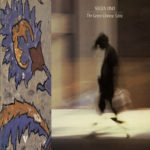
This one is a bit special. Last we heard from Seigen, he was introducing us to his very jazz-influenced take on Japanese New Age music. On the follow up to that epic debut, The Green Chinese Table, we find Seigen dividing his time up between recording sessions in Tokyo and New York City. It’s impossible to stress how that meeting of western and eastern minds really seasons the conditions that make this record sound like it does.
My favorite tracks are the ones co-written by frequent collaborator and dip in the pool member Tatsuji Kimura. Those tracks speak of futuristic, romantic, kind of meditation that sounds perfectly placed in our new found love for Japanese New Age Music. The others, where Seigen leads a talented pool of American experimental musicians like Arto Lindsay, Todd Garfinkle, and Jill Jaffe, finds him treading through post-rock territories that are far less meditative and more ruminative. These tracks are all explorations of forward thinking post-classical music and even freer jazz motifs.
With Arto Lindsay in tow, The Green Chinese Table’s “western” bits are able to venture south in to the music of Brazil and Latin America, letting Seigen Ono explore all sorts askew sambas and bossa novas more in line with Arto’s own work. Here, on a track like “Le Téte Dans Ma Téte” they are afforded less of a intellectual bounce and more of a playful twist.
What’s interesting is that you’d think Tatsuji’s own work would stick with what they know or we know of them. On tracks like “The Pink Room” we hear Tatsuji treat Seigen’s Americana-inflected guitar playing to arrangements that feel like they belong in some particularly beautifully dark, ambient Coil record. One thing to really enjoy, post-facto, are the very light sampled street, oceanic, and other found sounds that Tatsuji uses to move the song along, providing a soundbed for Seigen’s ruminative performance.
Taking Seigen’s preference not for perfection but for feel to another conclusion, we hear on tracks like the opener how sparse, minimal touches demanded from the players open themselves up to really sweeping sounds that do evoke some of the displaced influence of a place like Macau. “Seon In Macau” has audible ideas taken from the music of Portugal and the scales of Chinese music, but Seigen (wisely) vacillates the mood itself through all sorts of shadows and lights. Lovers of profound New Age harp music can find something enlightening here as the addition of a full string section, to these kind of progressive ideas, really makes the music even more impactful — a nice touch on Seigen’s part.
For those that think all Japanese New Age music is full of delicate synthesizers and twinkly drum machines, The Green Chinese Table injects an alternate angle where electro-acoustic instruments play with more vigor, but are nonetheless capable of imaginative wandering. How else can you explain tracks like “World Collision” and their reimagining of motifs from Seigen’s debut, hear “Waterfront”, as a track like “The Green Chinese Table” where once again Moon Rider’s Ryomei Shirai helps dissect it into so many more shades of blue?
Perfect for enjoying the shade on a hot summer day, Seigen Ono’s The Green Chinese Table is a treat for those who really love to let their mind wander around for a while.
